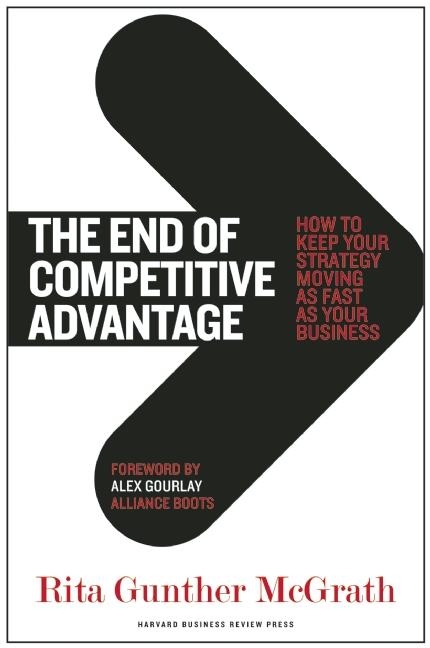Jack Covert Selects - The End of Competitive Advantage
June 13, 2013
The End of Competitive Advantage: How to Keep Your Strategy Moving as Fast As Your Business, Harvard Business Review Press, 204 pages, $30. 00, Hardcover, June 2013, ISBN 9781422172810 Many books hail the end of major institutions or mainstream conventions. Rita Gunther McGrath’s The End of Competitive Advantage is one of these books, but it is unique among its peers.
The End of Competitive Advantage: How to Keep Your Strategy Moving as Fast As Your Business, Harvard Business Review Press, 204 pages, $30.00, Hardcover, June 2013, ISBN 9781422172810
Many books hail the end of major institutions or mainstream conventions. Rita Gunther McGrath’s The End of Competitive Advantage is one of these books, but it is unique among its peers. The End of Competitive Advantage blows past the peripheral, specialized avenues of the world of business—often fodder for business-related media trends—and attacks one of the very core principles of business strategy.
McGrath’s main point is simple: sustainable competitive advantage is no longer a sure thing. She leads with the example of Fuji and Kodak. Kodak’s demise—which reached it’s bottom when it filed for Chapter 11 bankruptcy in early 2012—has been well documented in the media and business books, but the story of Fuji is less well known. Initially a Kodak competitor, Fuji began diversifying intensely in the 1980s. The many years’ worth of diversification has proved beneficial to the company, which saw $25 billion in revenue in 2011. This story perfectly illustrates that current business and economic environments do not allow for companies to simply rest upon a competitive advantage, no matter how secure it seems or hard they’ve worked to gain it. There are many such examples in the book detailing how once-giants are left wondering what happened to their industries. And this is exactly where McGrath steps in.
The End of Competitive Advantage shows leaders how to gain the foresight necessary to avoid falling prey to such outmoded strategy. McGrath calls this new strategy “transient advantage.”
The reconfiguration process is the secret sauce of remaining relevant in a situation of temporary advantage, because it is through reconfiguration that assets, people, and capabilities make the transition from one advantage to another.
The book provides many other examples of “growth outliers”—companies whose growth has stayed strong throughout various market and industry changes. One of the key abilities these outliers have exhibited, says McGrath, is their ability to remain internally balanced while frequently reconfiguring the outward elements of their business. Fostering good leadership and a healthy, innovation-centric culture is a natural foundation for the opportunity-centric organization. Part of a company’s ability to remain agile is the smart allocation of resources. Companies that organize their resources around new and fleeting opportunities will be the ones to turn those opportunities into revenue. McGrath briefly cites Sony, an increasingly absent brand in the realm of electronics devices, whose internal politics and concern over protecting their technologies tied up their resources and allowed other companies to quickly exploit the opportunities that Sony wasn’t taking.
The End of Competitive Advantage fits beautifully into the ongoing discussion about what defines successful companies today, and what will continue to in the future. Transient advantage lives happily alongside the renaissance in ethical behavior in our hyper-transparent business realm. There is nowhere for broken strategies to hide, but plenty of undiscovered land left to explore for the ambitious and the agile.



